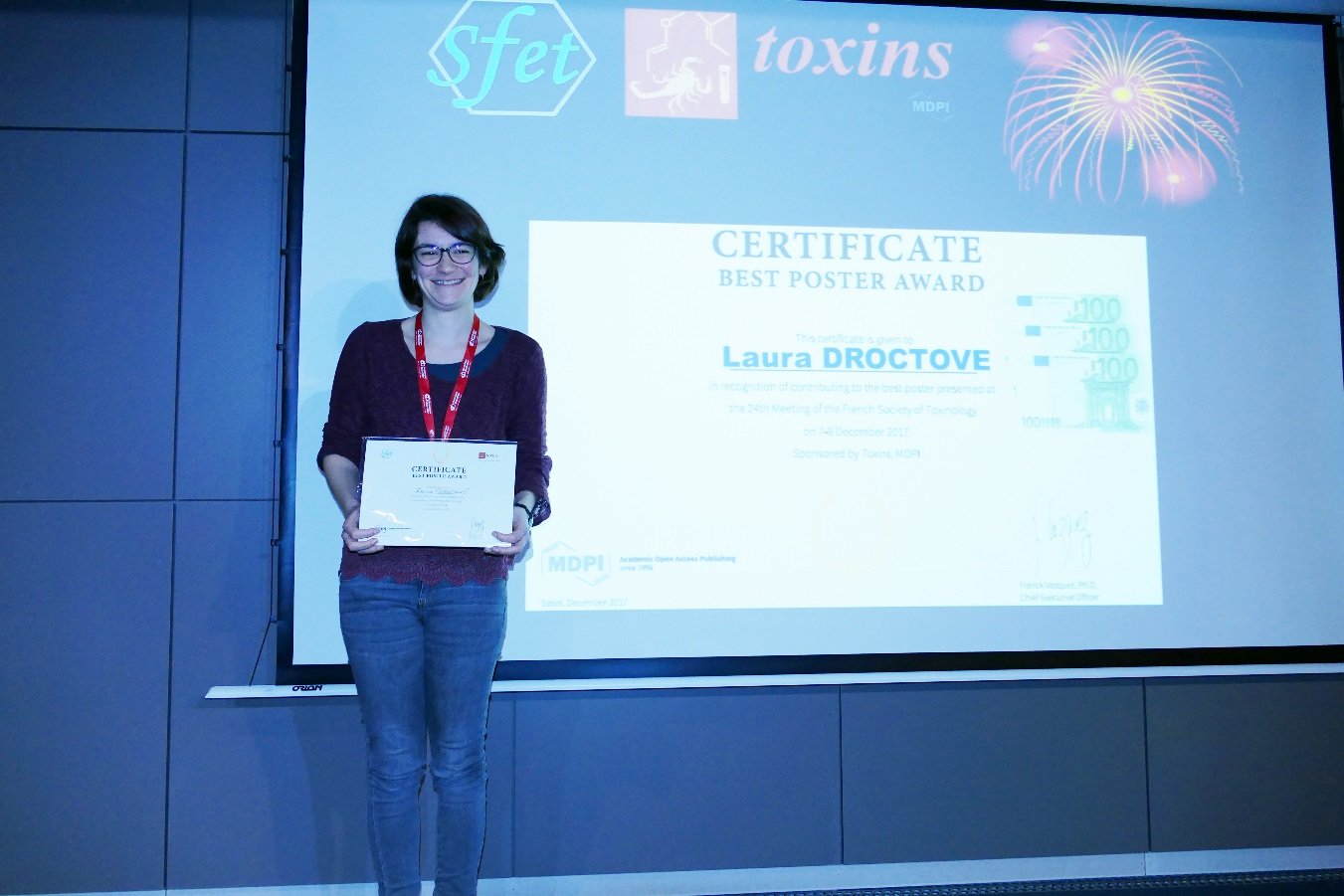Need Help?
19 January 2018
Congratulations to the Best Poster Award Winner at 24th Meeting of the French Society of Toxinology (SFET), Paris, 2017 (Sponsored by Toxins)
The editorial team of Toxins would like to congratulate the winner of the Best Poster Award for 24th Meeting of the French Society of Toxinology (SFET)—Dr. Laura Droctove.

*Photo with copyright permission from ©Conventus.
Dr. Droctove's team submitted the following paper for publication in Toxins:
Title: First Insights into the Pharmacodynamics of Mamba Toxins: Promising Therapeutic Candidates to Treat Kidney Cysts by Inhibition of Vasopressin Type 2 Receptor
Authors: Laura Droctove, Manon Lancien, Gilles Mourier, Denis Servent and Nicolas Gilles
Affiliation: CEA Saclay, Service d’Ingénierie Moléculaire des Protéines (SIMOPRO), 91191 Gif-sur-Yvette, France
Abstract:
Mambaquaretin-1 is the very first identified member of a group of mamba toxins which target the vasopressin type 2 receptor (V2R). V2R, primarily expressed in the principal cells of the kidney collecting duct, belongs to the G protein-coupled receptor family and regulates fluid osmotic pressure and diuresis through the vasopressin hormone. Mambaquaretins antagonize V2R and this property gives them potential therapeutic applications to treat disorders such as hyponatremia, syndrome of inappropriate antidiuretic hormone secretion (SIADH) or polycystic kidney diseases (PKDs). PKDs are severe genetic diseases which affect 1 in 400 to 1000 people in the world. However, therapeutic strategies are very limited. We demonstrated the efficacy of mambaquaretin-1 to slow down the progression of cysts in a rodent model, validating the toxin as a novel therapeutic strategy. Mambaquaretins promote an aquaretic effect which corresponds to an increase in urine output without any loss of osmoles. The in vivo dose–effect relationship was studied in healthy rats by a unique IP injection at different doses of mambaquaretin-1. The maximal effect is reached in 2 h post-injection and then decreases slowly following a mono- or bi-phasic kinetics of action, depending on the dose. The most suitable dose for a therapeutic development of mambaquaretin-1, 0.003 μmol/kg, was administered daily for 5 days to check a cumulative effect. The other mambaquaretins were compared to the leader toxin. Surprisingly, three of them display a huge discrepancy between their in vitro and in vivo efficacy which could be the consequence of their natural mutations, as they vary from 98 to 70% of sequence similarity to mambaquaretin-1. A pharmacokinetic study is ongoing in order to work out a mambaquaretins dosage system in a blood sample, thus investigating their in vivo behavior.

